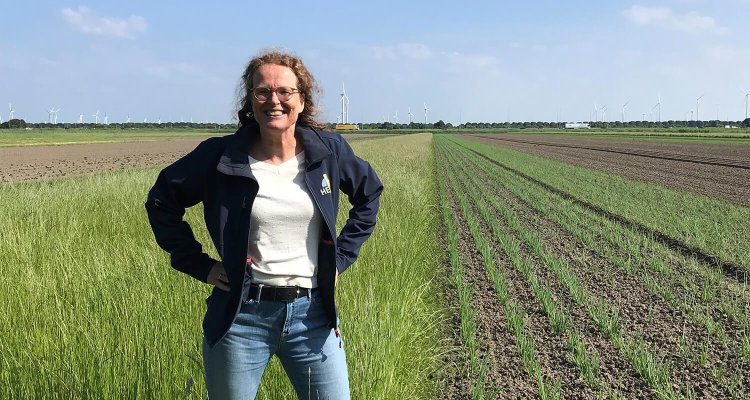
News
“We dare to allocate land for biodiversity” - Interview with Dutch lighthouse farms ERF BV and Hemus
This week, through an interview with Rosemarie Slobbe, the director of Hemus, we explore the activities of two inspiring Dutch Lighthouse farms, ERF BV and Hemus. These farms are closely connected and actively generating both theoretical and practical knowledge on nature-inclusive farming. They are also promoting the implementation of nature-based solutions to foster the integration of nature and agriculture in the Netherlands.
This interview is part of the Nature-Based Solutions interview series to celebrate the second edition of the Food Systems Innovation Challenge on nature-based solutions. We feature a series of exemplary and pioneering Lighthouse Farms around the world as the implemented nature-based solutions can serve as a major source of inspiration for students and other farmers. The Lighthouse farms place sustainable food production and the provision of ecosystem services at the very core of their farming activities.
Over the past years, working closely with the nature has been the focus of the Dutch organic Lighthouse Farms ERF BV and Hemus. By farming from the nature's perspective, both farms have achieved beautiful results in terms of production, soil health and biodiversity. Since January 2022, Rosemarie has been leading Hemus which was founded earlier in 2019 to promote knowledge generation and to keep long term nature inclusive farming in place.
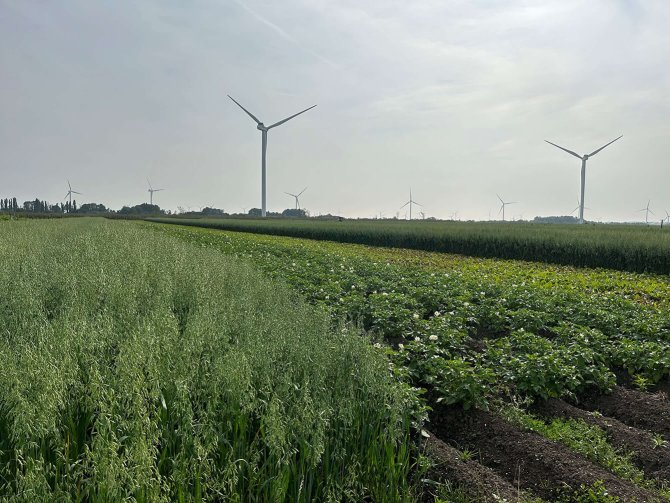
Rosemarie, could you tell us about the establishment of both ERF BV and Hemus and the total hectares the farms operate on in Flevoland?
ERF was founded in 1996 as a foundation in the Netherlands. After the creation of Flevoland—the newest province in the Netherlands (completed in 1986 through land reclamation from the sea)—the real estate branch of the Dutch government still had a significant amount of land reserved for potential future needs, such as housing, roads, or other public functions. The real estate branch proposed the idea of having all the reserve land managed by a single party, ensuring that if the government required land, it could be returned immediately.
In 1996, ERF was allocated 3,800 hectares of fertile land, and its chairman envisioned establishing large-scale organic farming in the new province. Soon after, ERF BV (a private limited company) was created so that the foundation could also sell the crops produced on the farmland. Over the years, as the government reclaimed land for expansion, ERF gradually returned portions of its land. However, with 1,100 hectares of farmland in 2025, ERF remains the largest privately owned organic farm in the Netherlands.
ERF BV's operations are based on temporary land leases, meaning its farming area is expected to decrease over time rather than expand. Recognising this and wanting to continue nature-inclusive knowledge generation and farming, ERF BV established Hemus in 2019. Together with ERF, Hemus is innovative in its use of new technologies, knowledge generation, and market development. Unlike ERF BV, Hemus leases its plots long-term from organizations such as Flevolandschap or private landowners. Hemus aims to demonstrate that nature-inclusive farming is viable while also generating practical knowledge to address challenges faced by Dutch nature-inclusive farmers. The knowledge developed at Hemus is then among others applied to ERF BV’s farmlands.
All the farmlands used for crop production are organically certified, and in total, we cultivate around 15 to 16 different crops. Due to the scale of our production, we can also supply organic vegetables to other European countries. Our largest sales market is Germany, where buyers require additional certifications (such as the Naturland and Bioland labels) with their own stricter requirements. As a result, part of ERF/Hemus's farmland meets even higher organic standards, if you could put it that way.
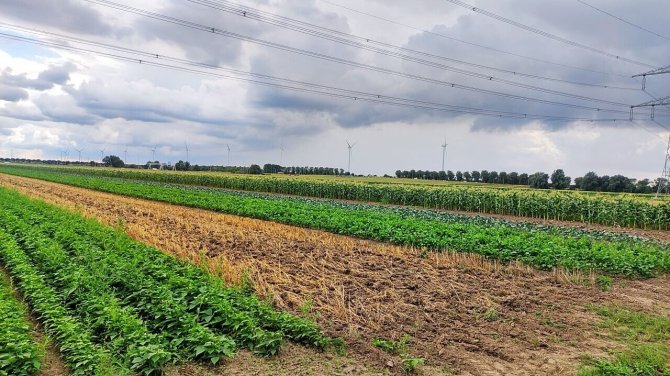
ERF BV and Hemus have several projects running in the field of sustainable agriculture, which do you think is a special one?
In 2018/2019, ERF began a strip cultivation experiment at the Hemus site, where different crop species were grown in rows next to each other. Strip cropping is known to offer many benefits, such as reducing the spread of pests and diseases. In collaboration with Wageningen University & Research, we investigated the optimal strip width for biodiversity—under the condition that no new machinery would need to be purchased.
Eventually, we established strips with widths of 6, 12, and 24 meters and found the most positive results in the 6-meter-wide strips. At this width, farming and harvesting remained practically feasible.
Next, researchers of Wageningen University & Research explored the best crop combinations for neighbouring strips. For eight different crops, we examined the effects of neighbouring species on the entire system, including biodiversity, crop yield, diseases such as Phytophthora, pest levels, and above-ground fauna by counting individual organisms and species diversity. The study concluded that the specific choice of neighbouring crops was not as important as having a high diversity of varieties.
In our production system, we incorporate permanent flower strips in the fields to create refuge areas for natural enemies. These strips provide shelter and food for beneficial insects, which, in turn, help control pests. Additionally, we incorporate as much green manure as possible after cultivation to restore soil organic matter and improve soil health.
A new research project on green manure will soon begin in collaboration with a knowledge institution. Since we farm on heavy clay soil, green manure is typically incorporated at the end of the year for the next growing season. However, we are curious to explore whether green manure could be left through the winter and which plant species would be best suited for this approach. One of Hemus’s key focuses is generating practical solutions that can be readily implemented.
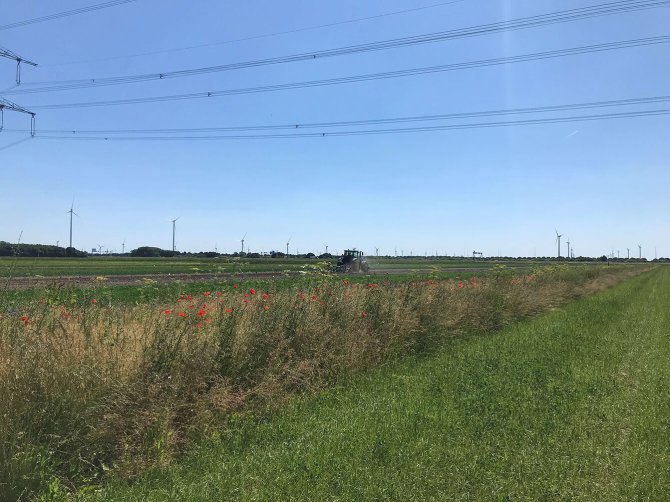
How do ERF BV and Hemus work together with nature? Can you identify a number of "nature-based" solutions?
One of the most important practices we implement is maintaining permanent flower strips within our plots, not just at the borders. This significantly reduces the distance natural enemies need to travel to find their targets—agricultural pests. Since these beneficial insects are closer to the crops, our farming system becomes more resilient. Of course, the permanent flower strips also provide shelter and food for natural enemies.
We have also implemented an agroforestry system with hazel trees planted between the arable crops. These shrub-like strips serve as biodiversity zones that support a wide range of insects and other beneficial organisms. The agroforestry system on our farm covers about four hectares. We believe that combining agroforestry with annual crops enhances the overall system, and in the long run, we think these biodiversity strips will pay off by reducing the need for pest control and improving resilience. Additionally, hazel trees capture more CO₂ compared to monoculture cropping.
There are many advantages to these practices, even though we are not directly compensated for them. We dare to allocate land for biodiversity because we believe in its long-term benefits.
Once a year, we organise a gathering with our field workers and invite scientists who are conducting research on our fields to exchange experiences and knowledge from both academic and farming perspectives. Simply bringing them together fosters meaningful and valuable discussions.
What are some challenges that occur at ERF BV and Hemus that you are still looking for a solution for?
We are exploring solutions for efficient irrigation in strip cultivation. A sprinkler irrigation system waters crops indiscriminately, supplying water to plants that do not actually need it. Drip irrigation was attempted but discontinued due to its drawbacks.
In agroforestry, we need a method to ensure that hazel trees grow in "open and black" soil rather than being surrounded by grass, which competes for nutrients. We realised that keeping a one-meter radius around the trees free of grass is crucial, as the trees, which are spaced two meters apart, require optimal soil conditions for growth. However, we are still searching for the best way to maintain these optimal soil conditions.
Additionally, we are currently experimenting with solar panels that rotate with the sun and integrating them into crop strips. Some solar panels are positioned in front of crop strips, but this setup presents challenges. There is also ongoing research into selecting the right herb mixture to grow beneath the panels, which will be tested for the first time this year. Extending these herb strips could contribute to biodiversity and soil health.
We would love to do more storytelling and highlight how our crops are being produced more sustainably. Consumers should be able to connect with the origins of their food, making it essential to bring products with compelling stories into short supply chains. For example, the beets grown between solar panels in partnership with Vattenfall demonstrate a model of regional, sustainable production.
In general, biodiversity loss is a major issue in Flevoland. Dust clouds and a lack of flowering plants could be addressed through regenerative practices.
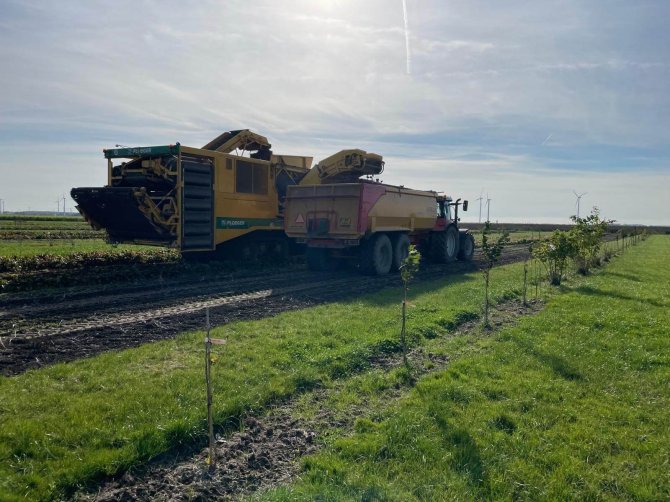
Finally, can you give a good tip to the students participating in the 2025 Food Systems Innovation Challenge? (What should they think about if they want to be successful?)
For students participating in the 2025 Food Systems Innovation Challenge, one crucial tip is to be well-informed by those experiencing the challenges firsthand: the farmers. Many solutions are already thought by farmers themselves but are not implemented due to time or financial constraints. Empathising with their situation and thinking outside the box while finding a balance between innovation and whether it is feasible to be implemented in practice is essential. By validating ideas directly with the people they aim to benefit, students can check whether their proposed solutions are both logical and feasible.
2025 Food Systems Innovation Challenge
The 2025 Food Systems Innovation Challenge is organised by Wageningen University & Research (WUR), WUR Student Challenges, the Netherlands Food Partnership (NFP), Foundation for Food & Agriculture Research, with the Global Network of Lighthouse Farms as knowledge partner.